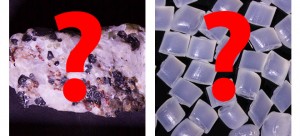Empirical vs Scientific/First Principles Exploration of Fluorescence
“Does this specimen fluoresce?”
“How can I best see the fluorescence from this specimen?”
We are often asked questions along these lines, where the ‘specimen’ could be animal, vegetable, mineral, or whatever. The application might be science, industry, art, or simply curiosity.
There are two approaches to addressing this question:
- Empirical – try the lights you have
- Scientific/First-principles – measure the spectral properties with instrumentation that enables you to explore a wide range of wavelengths
The Scientific approach has the advantage that you may discover a better way to see things, and the data can guide light source and filter selection.
Empirical approach
This is the classic trial and error approach, where you simply try whatever excitation lights you have and see if there is a response. This does not really answer the general question ‘Does it fluoresce?‘, but rather addresses the narrower question ‘Do any of these existing light sources that I have make it fluoresce?’ If you do see fluorescence you have no idea if you are using the ‘best’ wavelength to excite the subject as efficiently as possible, but that may not matter – very often just the ability to produce a response that you can see, photograph, or measure is all you need.
Case study – fluorescence in plastic granules
Scientific/First-principles approach
In this method you use a specialized instrument, typically a spectrofluorometer, to explore and measure the fluorescence spectral properties. It can excite the specimen at wavelengths that you specify and detect any resulting fluorescence with its highly sensitive detector. If you find fluorescence you can then use the instrument to more carefully characterize the specimen, measuring both the emission spectrum and the excitation spectrum. The emission spectrum shows you the range and relative intensity of wavelengths that are emitted for any given excitation, while the excitation spectrum shows you the relative ability of different wavelengths of light to excite the fluorescence. These two spectra together constitute a powerful tool for selecting light sources and barrier filters to best visualize or detect the fluorescence.
Case study – a fluorescent mineral
For more information or to get answers to your fluorescence questions contact NIGHTSEA.

